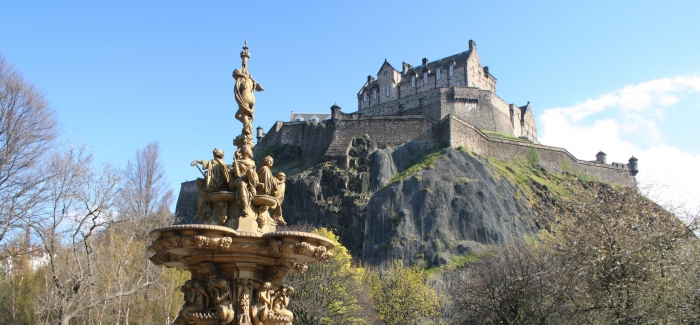England and the British Isles has been endowed with a rich tapestry of history that spans thousands of years and is often the envy of the world. From pre-historic man, Roman invasion, Saxon Kings and Norman conquests to Medival family feuds, the industrial revolution and the largest global empire the world has ever known.
This history leaves a palpable mark all over the country, from the Scottish border in the north to the English channel along the south coast. We have comprised a list of a few must-see historical sites for anyone with an interest in English history.
Sutton Hoo
Sutton Hoo, located at Sutton in Woodbridge, Suffolk, is the site of vast Anglo-Saxon burials from the 6th and early 7th century. This site shed new light onto an era of English history known as the Dark Ages and opened up a world that was once clouded in myth and legend. Found within a barrow were the remains of a huge 27-metre-long ship, and a burial chamber thought to be the final resting place of a great Anglo-Saxon king. The chamber itself was filled with Byzantine silverware, sumptuous gold jewellery, a lavish feasting set, and most famously, an ornate iron ceremonial helmet. This site seems to jump right from the pages of Beowulf. Today, this National Trust site offers visitors the chance to view the ancient mounds and many of the treasures that were found within the chamber. Sutton Hoo is truly England’s Valley of the Kings.
Bodmin Jail
Bodmin Jail lies on the edge of Bodmin Moor in Cornwall, situated in south-west England. Constructed in 1779, this jail was operational for 150 years, conducted fifty public hangings, and was the first jail in Britain to hold prisoners in individual cells. During the First World War, Bodmin Jail was used to keep some of Britain’s most beloved national treasures, including the doomsday book and the crown jewels. Today this once working prison has opened its doors to the public, and through fantastic exhibitions, the grim history of England's penal system is told. Over six levels of the jail can be explored and visitors can experience the sights, sounds and smells of this unique historical attraction.
Stonehenge
Stonehenge, located on Salisbury Plain, Wiltshire, is arguably one of England’s most famous landmarks and historical sites. Thought to have been constructed between 3000 BCE and 2000 BCE, this prehistoric arrangement of stones has astonished and mystified visitors and historians since time immemorial. Proposed functions for the site include usage as an astronomical observatory, a place to bury the dead, or as a pagan religious site. This English Heritage run site offers the full Stonehenge experience, providing knowledge and direction as you soak up the majestic atmosphere of the monument. A comprehensive visitors center welcomes over eight hundred thousand visitors a year.
Warwick Castle
Built by William The Conqueror in 1068, Warwick Castle embodies the quintessential image of England and its royal lineage. Located on the River Avon in the county of Warwickshire, this medieval castle has stood the test of time for nearly a thousand years. Originally a wooden structure built by conquering Normans in the 11th century, it now stands as unchanging stone. Over the past hundred and fifty years it has gained prominence as a tourist attraction and visitors can now view the perfectly preserved castle walls, a working portcullis, and room after room of historical artefacts. The collection of armour on display at Warwick Castle is regarded as second only to that of the Tower of London. During the summer months, Warwick Castle provides outdoor shows, one of which deploys a full working siege engine known as a trebuchet. The trebuchet fires flaming projectiles 100s of meters, to the awe of a watching crowd.
Hadrian’s Wall
Hadrian’s Wall is the perfect example of England’s Roman past, and the country’s role at the edge of an empire. The wall runs westward from Wallsend on the north-east coast, via Carlisle and Kirkandrews-on-Eden, finally finishing at Bowness-on-Solway at the north-west coast. The wall was constructed in the year AD 122 under the orders of Roman Emporer Hadrian. The wall itself was interwoven with forts along every mile, designed to keep the ‘barbarian tribes’ of Scotland - known as the Picts – from attacking Britanina’s frontier. Although the wall stretches a total of 84 miles, a visit to Housesteads Roman Fort offers the most dramatic site. This fort on the Hexham portion of the wall is the best-preserved Roman fort in all of England.
Iron Bridge
The Iron Bridge lies in the heart of England’s historic industrial heartland in Shropshire, an area often seen as the birthplace of the Industrial Revolution. Constructed in 1779, this cast-iron bridge traverses the River Severn and Ironbridge gorge, and in doing so the first cast-iron bridge in the world was opened. Today, this UNESCO world heritage site is set in some of the most picturesque English countryside, offering visitors the perfect balance of Industrial history and idyllic green surroundings. A local museum provides a plethora of information on the construction of the bridge, and the local area itself has a long connection with the many aspects of England’s industrial revolution.












